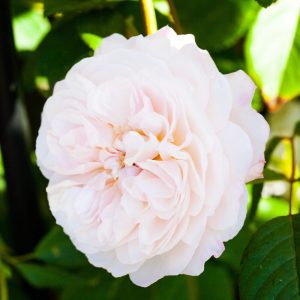Description
Phygelius ‘Colorburst White’ is a herbaceous perennial plant that produces spikes of tubular, pure white flowers from late spring to early autumn. The flowers are arranged in a raceme and are held above the bushy, evergreen foliage. This plant grows to a height and spread of 1-1.5 meters, and prefers a well-drained soil in a full sun or partial shade position. It is suitable for planting in borders or containers and is particularly attractive to bees and butterflies. To maintain its shape and encourage more flowering, deadhead regularly and prune back in spring.
Key Facts
- Common Name(s):Cape fuchsia ‘Colorburst White’
- Hardiness:Half hardy and would benefit from protection through Winter.
- How big will I get? Phygelius ‘Colorburst White’ can grow to a height of 1m and a spread of 1m.
- Did You Know That:Despite being known as Cape Fuchsia, it is not closely related to the Fuchsia genus?
Plant Calendar
A rough guide to how this plant will change through the year.
| Jan | Feb | Mar | Apr | May | June | July | Aug | Sept | Oct | Nov | Dec | |
| Flowering Time |  |
 |
 |
 |
||||||||
| Foliage Colour |  |
 |
 |
 |
 |
 |
 |
 |
 |
 |
 |
 |
| J | F | M | A | M | J | J | A | S | O | N | D |
 |
 |
 |
 |
||||||||
 |
 |
 |
 |
 |
 |
 |
 |
 |
 |
 |
 |
Care Guide

Soil Requirements
Phygelius ‘Colorburst White’ is a versatile plant and can cope with wet or drier soils, but prefers there to be decent drainage. This plant can grow in soil with a wide range of pH levels, it is not picky about the pH level of the soil.

Best Position
Phygelius ‘Colorburst White’ prefers a sheltered position and requires full sun to thrive, this consists of more than six hours of direct sunshine per day.

Maintenance
Phygelius ‘Colorburst White’ is fairly low maintenance and doesn’t require any pruning. However can be cut back to the base in late Spring if more space is wanted

Pest, Diseases and Wildlife
Phygelius ‘Colorburst White’ can have problems with capsid bug, and it tends not to have problems with diseases. It is not considered to be toxic.





